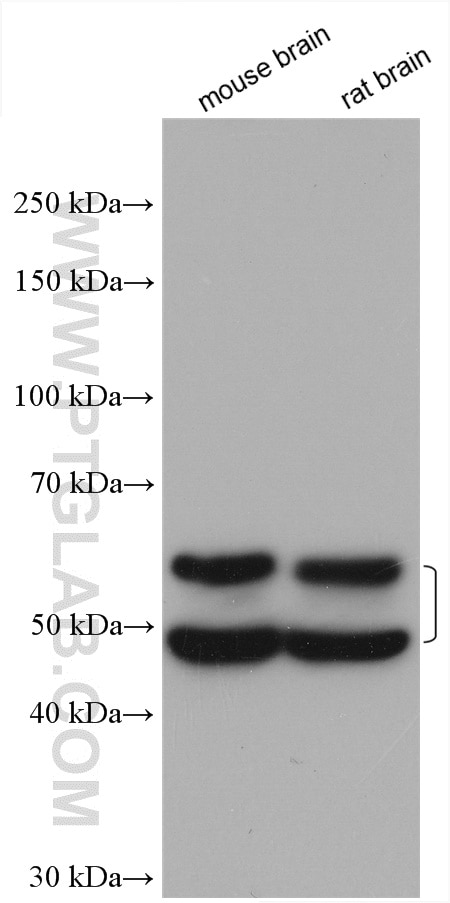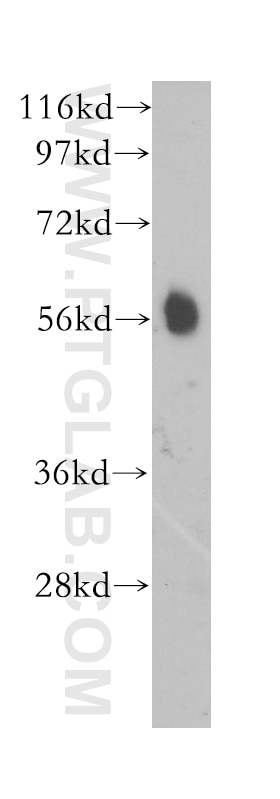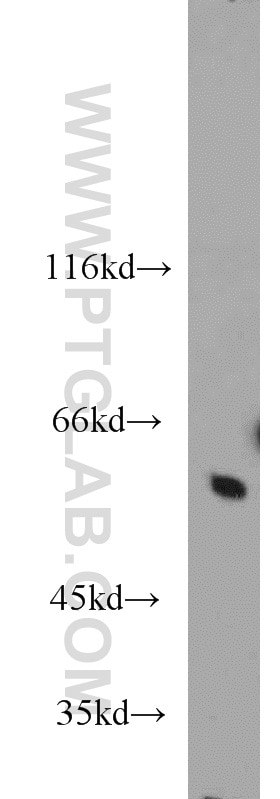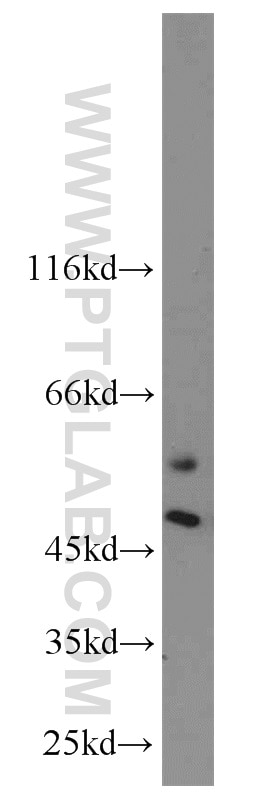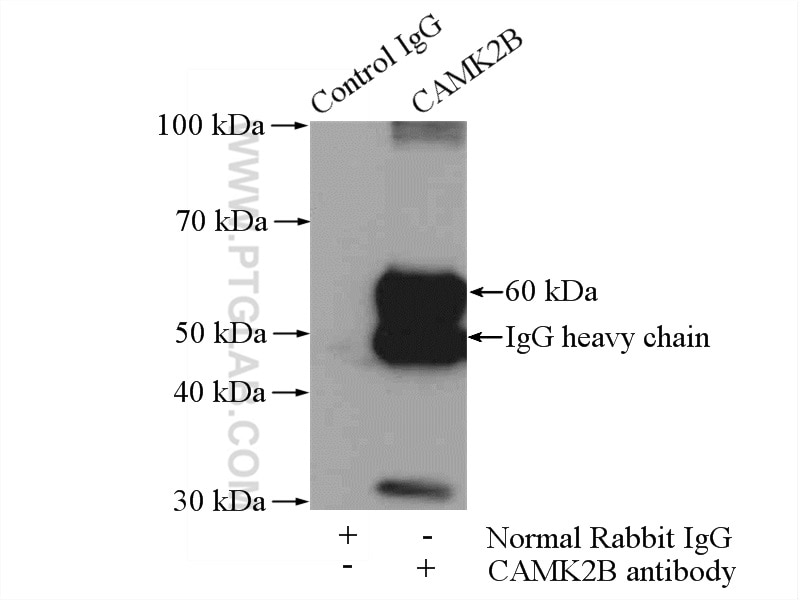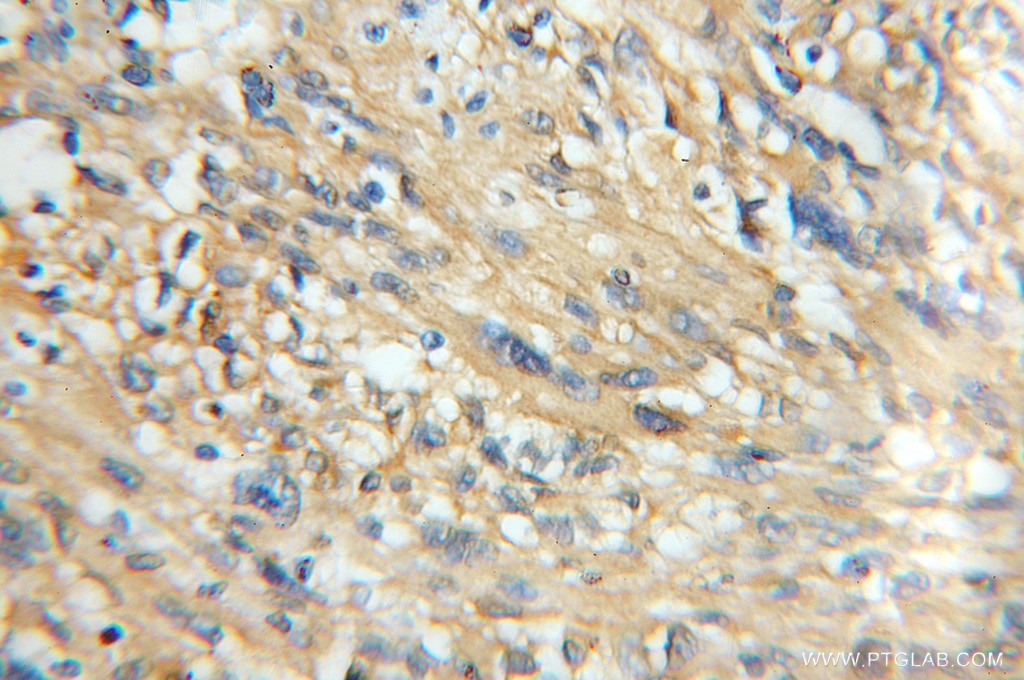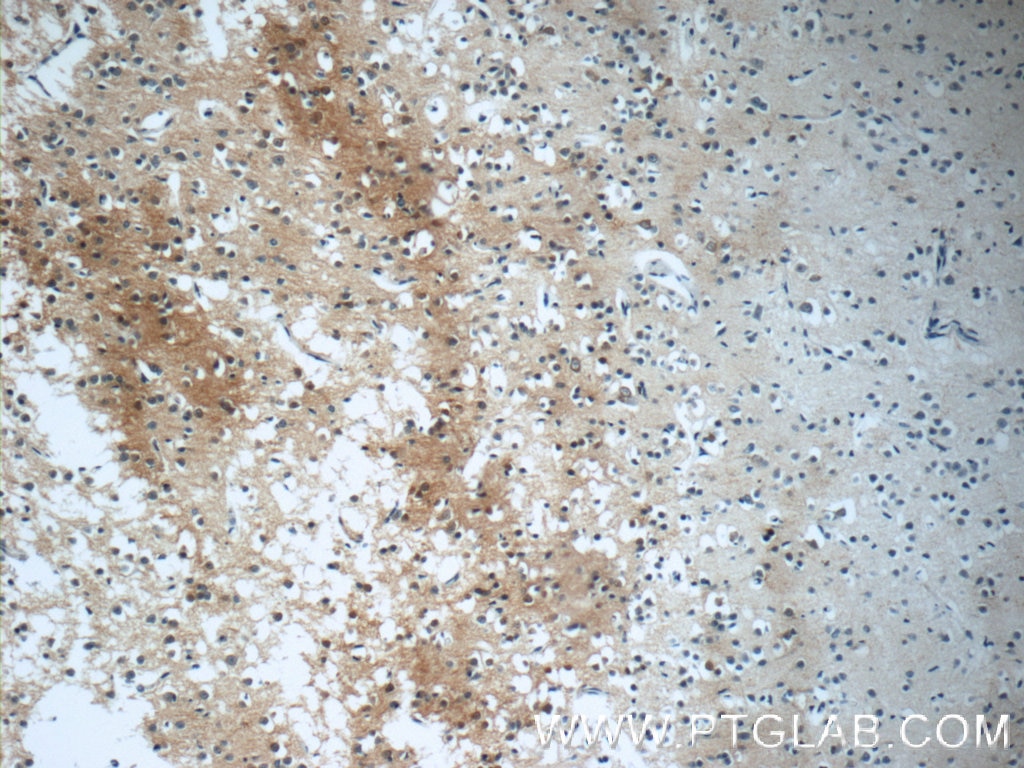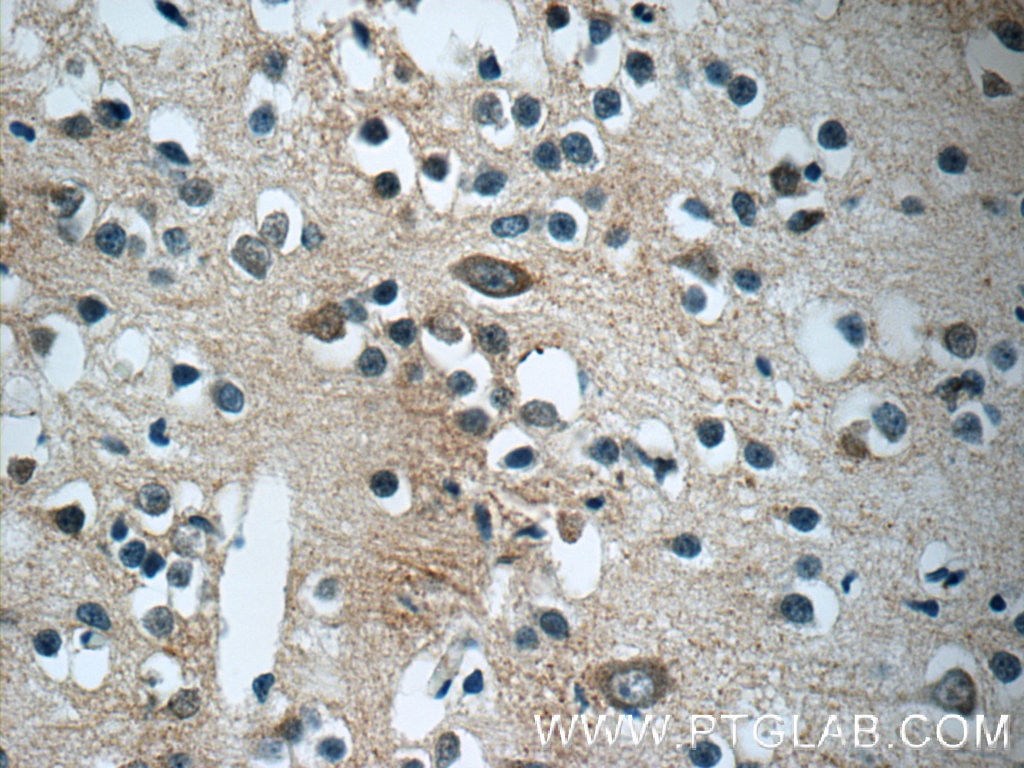Tested Applications
| Positive WB detected in | mouse brain tissue, SH-SY5Y cells, human brain tissue, rat brain tissue |
| Positive IP detected in | mouse brain tissue |
| Positive IHC detected in | human gliomas tissue, human brain tissue Note: suggested antigen retrieval with TE buffer pH 9.0; (*) Alternatively, antigen retrieval may be performed with citrate buffer pH 6.0 |
Recommended dilution
| Application | Dilution |
|---|---|
| Western Blot (WB) | WB : 1:1000-1:4000 |
| Immunoprecipitation (IP) | IP : 0.5-4.0 ug for 1.0-3.0 mg of total protein lysate |
| Immunohistochemistry (IHC) | IHC : 1:20-1:200 |
| It is recommended that this reagent should be titrated in each testing system to obtain optimal results. | |
| Sample-dependent, Check data in validation data gallery. | |
Published Applications
| KD/KO | See 1 publications below |
| WB | See 10 publications below |
| IHC | See 1 publications below |
| IF | See 2 publications below |
| IP | See 1 publications below |
Product Information
11533-1-AP targets CaMKII Beta in WB, IHC, IF, IP, ELISA applications and shows reactivity with human, mouse, rat samples.
| Tested Reactivity | human, mouse, rat |
| Cited Reactivity | human, mouse, rat, pig, zebra finches |
| Host / Isotype | Rabbit / IgG |
| Class | Polyclonal |
| Type | Antibody |
| Immunogen | CaMKII Beta fusion protein Ag2119 Predict reactive species |
| Full Name | calcium/calmodulin-dependent protein kinase II beta |
| Calculated Molecular Weight | 503 aa, 56 kDa |
| Observed Molecular Weight | 50-70 kDa |
| GenBank Accession Number | BC019070 |
| Gene Symbol | CaMKII beta |
| Gene ID (NCBI) | 816 |
| RRID | AB_2275067 |
| Conjugate | Unconjugated |
| Form | Liquid |
| Purification Method | Antigen affinity purification |
| UNIPROT ID | Q13554 |
| Storage Buffer | PBS with 0.02% sodium azide and 50% glycerol pH 7.3. |
| Storage Conditions | Store at -20°C. Stable for one year after shipment. Aliquoting is unnecessary for -20oC storage. 20ul sizes contain 0.1% BSA. |
Background Information
CAMK2B(Calcium/calmodulin-dependent protein kinase type II subunit beta ), also named CAM2, CAMK2, and CAMKB, belongs to the protein kinase superfamily, CAMK Ser/Thr protein kinase family, and CaMK subfamily. It is a prominent kinase in the central nervous system that may function in long-term potentiation and neurotransmitter release. CAMK2B is a member of the NMDAR signaling complex in excitatory synapses, it may regulate NMDAR-dependent potentiation of the AMPAR and synaptic plasticity. It plays a distinct role in the induction of anergy in T lymphocytes, by differential regulation of IL10 and IL2 gene transcription suggesting MEF2A as a molecular target that can integrate different calcium signals(PMID:22578382). This protein has 8 isoforms produced by alternative splicing with a molecular weight between 50 kDa and 73 kDa. This antibody may have cross-reaction with CAMK2A/D/G due to the high homology.
Protocols
| Product Specific Protocols | |
|---|---|
| WB protocol for CaMKII Beta antibody 11533-1-AP | Download protocol |
| IHC protocol for CaMKII Beta antibody 11533-1-AP | Download protocol |
| IP protocol for CaMKII Beta antibody 11533-1-AP | Download protocol |
| Standard Protocols | |
|---|---|
| Click here to view our Standard Protocols |
Publications
| Species | Application | Title |
|---|---|---|
Aging (Albany NY) Gastrodin ameliorates learning and memory impairment in rats with vascular dementia by promoting autophagy flux via inhibition of the Ca2+/CaMKII signal pathway. | ||
Sci Total Environ Neurotoxicity and biomarkers of zinc oxide nanoparticles in main functional brain regions and dopaminergic neurons. | ||
Front Oncol Anti-Tumor Role of CAMK2B in Remodeling the Stromal Microenvironment and Inhibiting Proliferation in Papillary Renal Cell Carcinoma.
| ||
Front Cell Neurosci Pin1 Is Regulated by CaMKII Activation in Glutamate-Induced Retinal Neuronal Regulated Necrosis. | ||
Neural Plast Ketamine Induces Lasting Antidepressant Effects by Modulating the NMDAR/CaMKII-Mediated Synaptic Plasticity of the Hippocampal Dentate Gyrus in Depressive Stroke Model. |
